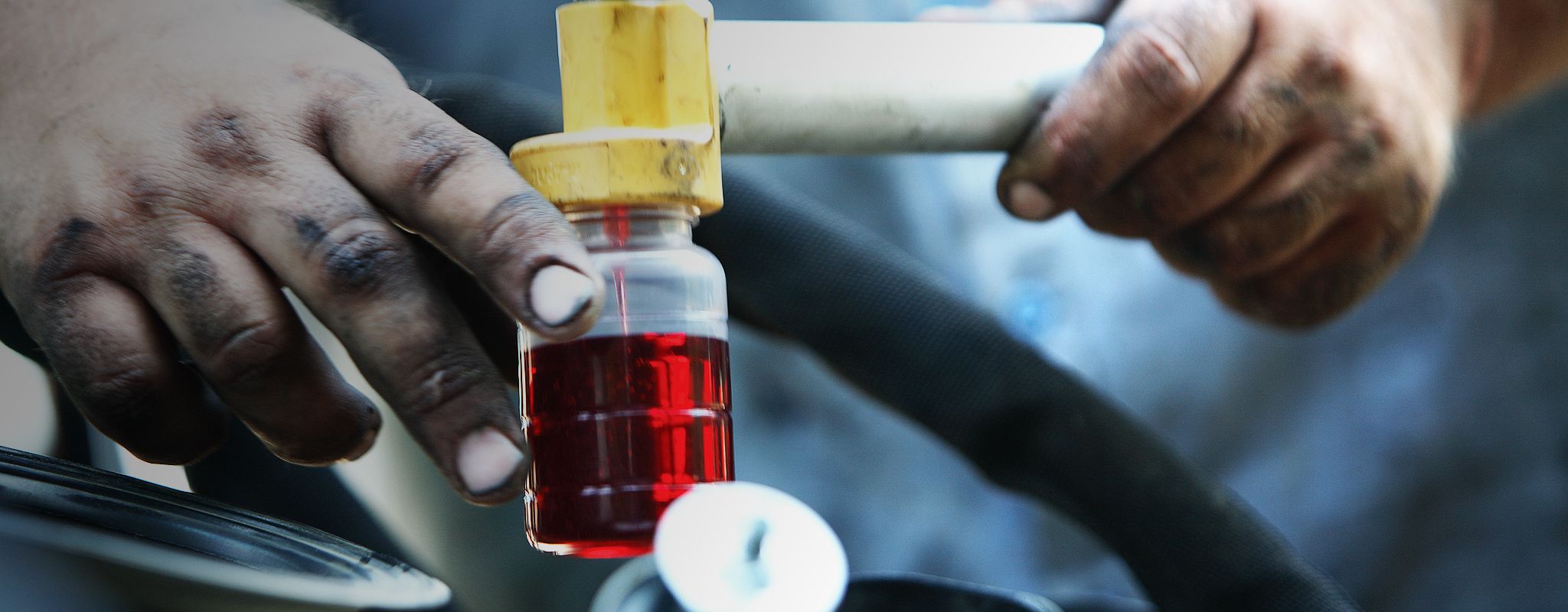

Sign In
Welcome! Sign In to personalize your Cat.com experience
If you already have an existing account with another Cat App, you can use the same account to sign in here
Register Now
One Account. All of Cat.
Your Caterpillar account is the single account you use to log in to select services and applications we offer. Shop for parts and machines online, manage your fleet, go mobile, and more.
Account Information
Site Settings
Security
How to Take a Fluid Sample & Read Results
See real-time examples of how to take a proper fluid sample as well as access to "how to" guides for how to properly take, label and understand the results of the fluid analysis.
"How To" Guides
Establishing a routine sampling interval helps you and your dealer build up a trend of data over time, which means you’ll enjoy even more meaningful recommendations from our expert analysts. And the first step to good results is submitting a clean sample. These tools show you how.


6 Things Your Fluids are Telling You
During Cat® S•O•S℠ Services analysis, we perform multiple tests on your machine’s oil, coolant and diesel fuel. The results of these tests can reveal a lot of important information about your equipment, including:
1. If your components are wearing at normal rates
Each oil-washed system produces a particular concentration of wear metals during normal operation. By evaluating wear inside the lubricated compartment, we can see if your rates are normal or not.
What we look for:
- Wear metals including iron, lead, copper, aluminum and chrome
- Silicon, which can indicate dirt entry depending on local soil conditions
- Sodium, which is a potential indicator of water or coolant entry
2. If your oil has reached the end of its useful life
Wear occurs when oil depletes its additives and begins to deteriorate. That can damage components in oil-washed compartments.
What we look for:
- Viscosity — if it’s too low, wear can occur; if it’s too high, oil won’t do its job
- Oxidation, which can trigger sticking piston rings in your engine or increase pump wear and damage valves in your hydraulic system
- Sulfation, which can corrode valves, cylinder liners and more- Nitration, which may result in oil filter plugging, crankcase deposits and other issues
3. If your oil is contaminated
Even the smallest particles (those not visible to the naked eye) can do big damage inside your machine. That’s why identifying and eliminating fluid contamination is so important.
What we look for:
- Soot from partially burned fuel, which can plug oil filters and cause engine wear
- Fuel from the combustion process, which can cause low viscosity
- Water from condensation, leaks or wet conditions, which can cause wear, rust and sludge
- Coolant, which can contaminate engine oil
4. If you’re using the right oil
The wrong fluid in the wrong compartment can affect performance and lube protection — or even severely damage major components.
What we look for:
- Viscosity: Is it optimal for the geared compartment and your application?
- Additive chemistry: Is the oil appropriate based on its unique chemical makeup?
5. If your coolant is doing its job
Today’s engines produce a lot of power from a small package, and cooling systems have to do more with less. Extending drain intervals or recycling coolant to reduce disposal costs could lead to major problems.
What we look for:
- Coolant type: Are you using a coolant with the right chemistry for your machine?
- Boil and freeze protection: Is your coolant providing adequate protection?
- Condition: Are pH, conductivity, nitrite, solids, odor, color and appearance all in order?
- Contamination: Has anything harmful entered?
6. If you’re putting quality fuel in your tank
Fuel quality is a key indicator of overall system health. Poor-quality fuel — inside the tank and out — can result in abnormal component wear and rising maintenance costs.
What we look for:
- Water contamination, which can lead to filter-plugging microbe growth
- Diesel particulates, which indicate if your equipment is meeting emissions standards
- Particulate clouding, which can result from using or storing fuel in cold weather
- Sources of filter plugging, hard starting, white smoke, accelerated wear and low power
